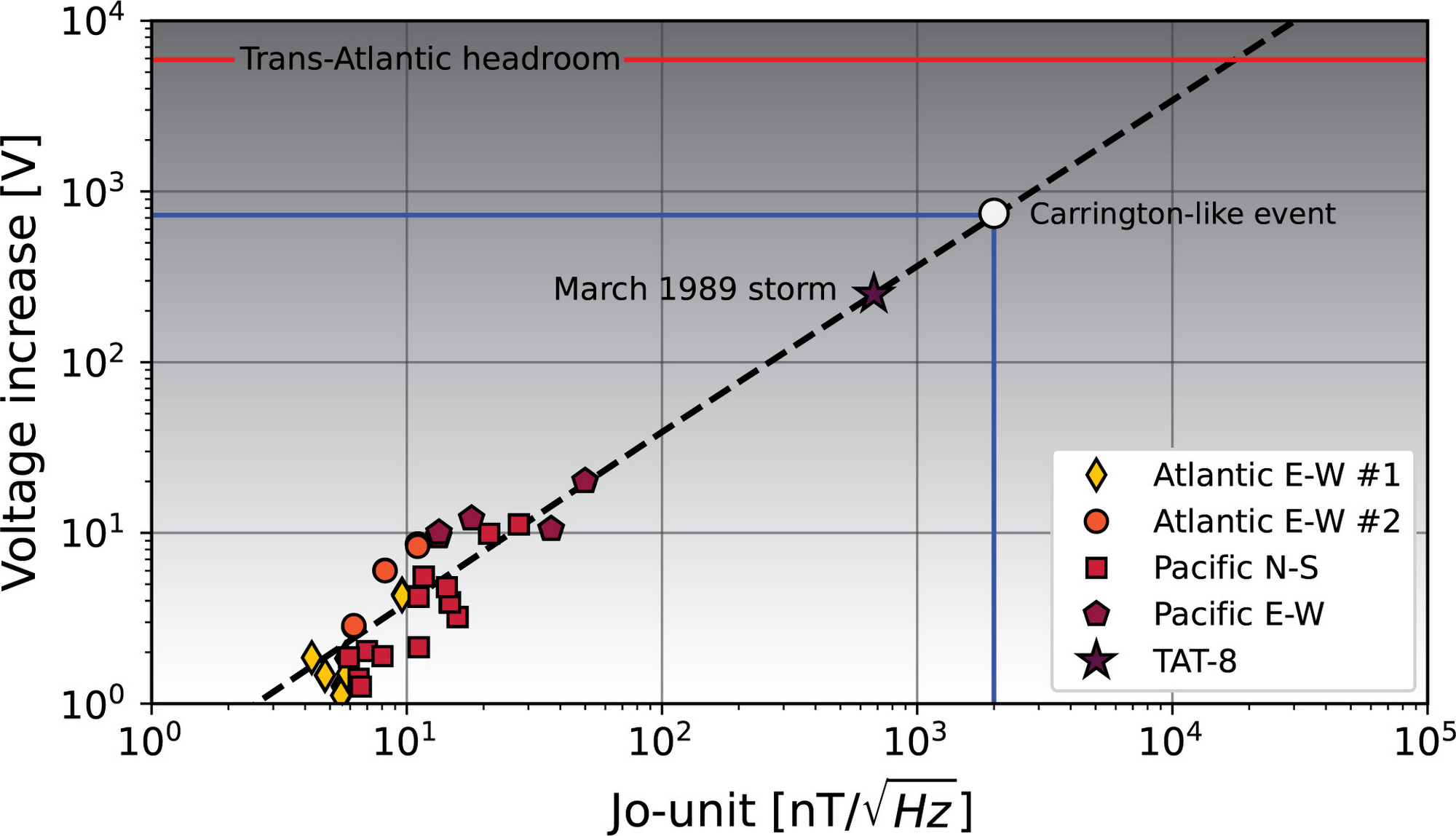Does the internet need sunscreen? No, submarine cables are protected from solar storms

Jorge C. Castellanos
Network Engineer
Urs Hölzle
Senior Vice President, Technical Infrastructure, Google Cloud
Try Google Cloud
Start building on Google Cloud with $300 in free credits and 20+ always free products.
Free trial
Editor’s note, May 13, 2024: With the recent spate of solar storms, we thought it would be fun to revisit this blog post from 2022 about their potential impact on our underwater subsea cables that carry so much of the world’s internet traffic.
To the casual observer, the Sun is constant and unchanging. But in fact, this nearly perfect ball of plasma regularly spits large quantities of superheated gas into interplanetary space, creating solar storms that wreak havoc on the Earth’s magnetic field as they approach and pass through the atmosphere. These geomagnetic disturbances are visible in polar skies as Aurora Borealis and Aurora Australis, nature’s most spectacular light shows.
Their beauty notwithstanding, solar storms may have equally dramatic and potentially destructive effects: they can induce extreme voltages in electric wires, threatening the stability of electrical grids, up to and including the possibility of destroying the undersea internet cables that carry much of the world’s internet traffic.
At Google, we have a long history of building fiber optic cables with our telecommunications partners; to date, we’ve invested in 22 subsea cable projects that deliver services to Google and Google Cloud customers around the world. So needless to say, the prospect of losing any of these cables to a large solar storm got our attention — especially when you consider that Solar Cycle 25, a period of increased solar activity, has begun.


To assess this risk, a team of Google scientists set out to better understand the impact of space weather phenomena on large interconnected systems, and evaluate it against real-world data. What we found is that our subsea cables are safe and that the risk of large-scale cable damage from a solar storm is low. (Phew!) To understand how we came to this conclusion, let’s first shed some light on solar storms and their effect on subsea cables.
Faraday’s law in action
Solar storms provide a large-scale demonstration of Faraday’s law of induction: a variable magnetic field will cause a variable electric field. The Earth’s magnetic field is distorted and weakened as the solar storm approaches, which in turn generates electric fields that propagate through the conducting interior of the Earth. These geoelectric fields can enter grids of transmission lines through their grounding points and induce large voltage swings that can cause problems for their operation.
This was famously observed in 1859 during a severe solar storm known as The Carrington Event, the most intense geomagnetic storm in recorded history, which caused severe damage to the telegraph network of the time. Contemporary electric grids are at risk too: the March 1989 geomagnetic storm knocked out power across large sections of Eastern Canada. In short, based on Faraday’s law, any interconnected electrical system that is anchored in the Earth is at risk.
Submarine cables fit that description, connecting continents across the sea floor over very long copper lines. The cables consist of glass fibers through which a laser shoots light to the other side. There are also underwater optical amplifiers along the line that boost the light signal at regular intervals.


Figure 1: A simplified picture of a submarine cable.
On both sides of the ocean, a landing station contains the lasers as well as redundant high-voltage powering feed equipment (PFE) to provide power to the many repeaters along the path. The Earth's ground completes the electrical circuit. For redundancy, the two PFEs maintain a design voltage between themselves. For example, for a cable that needs 10,000 Volts, one end provides +5,000 Volts and the other -5,000 Volts. If one of the PFEs fails, the other is designed to double its voltage so the overall voltage across the cable remains the same. When this happens, the PFE that was previously carrying 5,000 Volts surges to assume the whole load, in keeping with its redundant design.
A shock to the system
How much voltage would a large solar storm add to a very long copper wire under the ocean? To find out, Google scientists analyzed voltage fluctuations in a number of geographically distributed submarine cables over a five-month observation period that captured both moderate and low solar storm activity. Regardless of the length or orientation of the cable, it turns out that the voltage disturbance was closely correlated to the strength of the geomagnetic perturbation. This allowed us to estimate the impact of a future Carrington-type event without actually waiting for one.


The graph shows the voltage increase on different submarine cables as a function of the storm’s magnetic field fluctuations, recorded by a worldwide network of magnetic observatories. Each data point corresponds to a storm that registered on a submarine cable and its nearest magnetometer. There were no huge storms during our observation period, so none of the storms caused significant voltage variations.
Luckily for us, a transoceanic cable captured the 1989 storm, inducing a voltage of about 300 Volts above the nominal power of the cable. Extrapolating from these observations, an event like the 1859 Carrington Event would only result in a voltage increase of 800 Volts. Because of their redundant power design, cables such as our transatlantic lines can typically absorb fluctuations of up to 6,000 Volts — much larger than even the 1859 storm.
So, fortunately, submarine systems appear to be well protected against the effects of solar storms. We will publish the results of our study in an upcoming peer-reviewed scientific paper next year. In the interim, we’re glad to report that, at least as far as submarine internet cables are concerned, you can safely enjoy the northern lights without worrying that they’ll take out the internet.



